A Faulty Throttle Body can cause a myriad of performance issues in your vehicle, including reduced power, poor acceleration, and rough idling; CAR-TOOL.EDU.VN is dedicated to providing the information you need to diagnose and address these problems effectively. By understanding the signs and symptoms of a failing throttle body, such as poor fuel economy, illuminated check engine light, and electrical issues, you can ensure your vehicle operates smoothly and efficiently, utilizing our resources to find the right replacement parts and diagnostic tools, preventing any long-term engine damage.
Contents
- 1. What is a Throttle Body and What Does It Do?
- 2. What are the Key Symptoms of a Faulty Throttle Body?
- 3. What Causes a Throttle Body to Fail?
- 4. How Can You Diagnose a Faulty Throttle Body?
- 5. What is the Process for Cleaning a Throttle Body?
- 6. When Should You Replace a Throttle Body Instead of Cleaning It?
- 7. What are the Potential Consequences of Ignoring a Faulty Throttle Body?
- 8. Can a Faulty Throttle Body Affect Other Car Components?
- 9. What are Common Trouble Codes Associated with a Faulty Throttle Body?
- 10. What Are the Steps to Replace a Faulty Throttle Body?
1. What is a Throttle Body and What Does It Do?
The throttle body regulates the amount of air entering an engine, crucial for proper combustion; according to a study by the Society of Automotive Engineers (SAE), precise air-fuel mixture control directly impacts engine performance and emissions. When the throttle body malfunctions, it disrupts this balance, leading to various operational problems.
The throttle body is a critical component within the air intake system of a vehicle’s engine. Its primary function is to control the amount of air that flows into the engine’s combustion chambers. This regulation of airflow is essential for mixing with fuel to create the combustion needed to power the vehicle. Here’s a detailed breakdown:
- Functionality: The throttle body typically consists of a housing that contains a butterfly valve or plate. This valve pivots to open and close, thereby controlling the amount of air that can pass through. The position of the valve is directly linked to the accelerator pedal, either mechanically or electronically.
- Operation: When the driver presses the accelerator pedal, the throttle valve opens, allowing more air into the engine. Conversely, when the pedal is released, the valve closes, reducing the airflow. The engine control unit (ECU) monitors the throttle position and adjusts the fuel injection accordingly to maintain the correct air-fuel mixture.
- Importance: Proper functioning of the throttle body is vital for maintaining engine efficiency, power output, and emissions control. A clean and well-functioning throttle body ensures smooth acceleration, stable idling, and optimal fuel economy.
 Throttle body
Throttle body
2. What are the Key Symptoms of a Faulty Throttle Body?
Key symptoms include lack of power, acceleration issues, unstable idling, dirt buildup, poor mileage, electrical problems, and a check engine light; a comprehensive study from the University of Michigan’s Automotive Research Center highlights that early detection and repair of throttle body issues can significantly improve vehicle reliability and reduce overall maintenance costs. Recognizing these signs early can prevent more extensive damage.
Here are the detailed symptoms:
- Lack of Power:
- Description: When the throttle body isn’t working correctly, the engine may not receive the correct amount of air needed for combustion, leading to a noticeable reduction in power.
- Impact: The car might feel sluggish, especially when trying to accelerate or climb hills.
- Technical Explanation: An improper air-fuel mixture (either too rich or too lean) reduces the efficiency of the combustion process, resulting in decreased engine output.
- Issues While Accelerating:
- Description: Problems with acceleration can manifest as uneven or hesitant responses when pressing the accelerator pedal.
- Impact: The car may struggle to accelerate smoothly, or it might not accelerate at all beyond a certain point.
- Technical Explanation: A malfunctioning throttle body can cause delays or inconsistencies in the airflow, disrupting the engine’s ability to increase power quickly and efficiently.
- Higher or Lower Idling:
- Description: Irregular idling speeds, such as stalling after stopping, very low idle speeds after starting, or stalling when the accelerator is pressed, are common indicators.
- Impact: The engine might run roughly or stall frequently, especially at low speeds or when stationary.
- Technical Explanation: Dirt or carbon deposits on the throttle body can disrupt airflow, leading to unstable idle speeds as the engine struggles to maintain a consistent RPM.
- Dirt or Grime Build-up:
- Description: Accumulation of dirt, grime, or carbon deposits (coking) within the throttle body can impede its function.
- Impact: A buildup of contaminants creates a rough surface that disrupts the air-fuel flow, diminishing engine effectiveness.
- Technical Explanation: Carbon deposits and grime restrict the smooth movement of the throttle valve, leading to inconsistent airflow and reduced engine performance.
- Poor Mileage:
- Description: A noticeable decrease in fuel economy is a significant symptom of a faulty throttle body.
- Impact: The car consumes more fuel than usual, increasing running costs.
- Technical Explanation: An inefficient air-fuel mixture caused by a malfunctioning throttle body forces the engine to work harder, consuming more fuel to maintain performance.
- Electrical Problems:
- Description: Modern cars rely heavily on sensors and electronics. A dirty or malfunctioning throttle body sensor can cause unnecessary corrections to the air-fuel mixture.
- Impact: The car might enter a reduced power mode or limit engine RPM.
- Technical Explanation: When the throttle body sensor is covered in dirt, it sends incorrect signals to the ECU, leading to improper adjustments in the air-fuel mixture and potentially triggering protective measures like reduced power mode.
- Check Engine Light:
- Description: A failing throttle body can trigger the check engine light on the dashboard.
- Impact: The check engine light indicates that the car’s computer has detected a problem, which could be related to the throttle body.
- Technical Explanation: The electronic throttle control system monitors the performance of the throttle body. If it detects a problem, it illuminates the check engine light, signaling the need for diagnostic and repair.
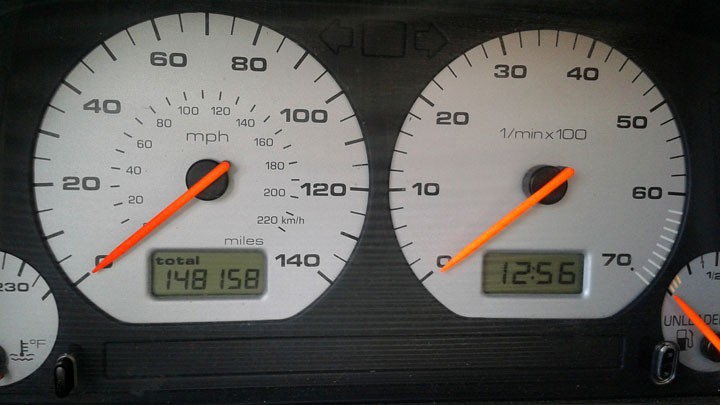 Lack of Power
Lack of Power
3. What Causes a Throttle Body to Fail?
Throttle bodies often fail due to dirt and carbon buildup, electrical sensor malfunctions, or mechanical wear; research from the Argonne National Laboratory indicates that regular maintenance, including throttle body cleaning, can extend the lifespan of this component and improve fuel efficiency. Addressing these common causes can significantly reduce the risk of failure.
The failure of a throttle body can stem from several causes, which can be broadly categorized into issues related to buildup, electrical malfunctions, and mechanical wear. Here’s a detailed look at each of these:
- Dirt and Carbon Buildup:
- Description: The most common cause of throttle body issues is the accumulation of dirt, grime, and carbon deposits. These deposits can build up over time, especially in vehicles that operate in dusty or polluted environments.
- Impact: This buildup restricts airflow and interferes with the smooth movement of the throttle plate.
- Technical Explanation: As air passes through the throttle body, it carries particles of dirt and oil vapor. These particles stick to the surfaces inside the throttle body, forming a layer of grime. Carbon deposits, resulting from incomplete combustion, also contribute to this buildup. The accumulation creates a rough surface that disrupts the airflow, reducing engine efficiency and performance.
- Electrical Sensor Malfunctions:
- Description: Modern vehicles use electronic throttle bodies with sensors to monitor the position of the throttle plate and adjust the air-fuel mixture accordingly. Malfunctions in these sensors can lead to throttle body failure.
- Impact: Faulty sensors can send incorrect signals to the engine control unit (ECU), causing improper adjustments to the air-fuel mixture.
- Technical Explanation: The throttle position sensor (TPS) is a critical component that provides feedback to the ECU about the throttle plate’s position. If the TPS fails or becomes contaminated, it can send inaccurate signals, leading to poor engine performance, stalling, or other issues. Similarly, the electronic throttle control (ETC) motor, which controls the throttle plate’s movement, can fail due to electrical problems or mechanical wear.
- Mechanical Wear:
- Description: Over time, the mechanical components of the throttle body can wear out, leading to failure.
- Impact: Worn components can cause the throttle plate to stick or bind, reducing its ability to open and close smoothly.
- Technical Explanation: The throttle plate and its pivot points can wear down due to constant use. This wear can cause the plate to stick or bind, leading to erratic airflow and reduced engine performance. Additionally, the springs and linkages that control the throttle plate’s movement can weaken or break, causing the throttle body to malfunction.
- Vacuum Leaks:
- Description: Vacuum leaks around the throttle body can disrupt the air-fuel mixture, leading to performance issues.
- Impact: Leaks can cause the engine to run lean, resulting in rough idling, stalling, and reduced power.
- Technical Explanation: Vacuum leaks allow unmetered air to enter the engine, which throws off the air-fuel ratio. The ECU tries to compensate, but this can lead to inefficient combustion and poor engine performance.
- Poor Maintenance:
- Description: Lack of regular maintenance, such as cleaning the throttle body, can accelerate its failure.
- Impact: Neglecting to clean the throttle body allows dirt and carbon deposits to accumulate, leading to performance issues and eventual failure.
- Technical Explanation: Regular cleaning of the throttle body removes dirt and carbon deposits, ensuring smooth airflow and optimal engine performance. Failing to perform this maintenance task can lead to the buildup of contaminants, which eventually cause the throttle body to malfunction.
 Issues while accelerating
Issues while accelerating
4. How Can You Diagnose a Faulty Throttle Body?
Diagnosing a faulty throttle body involves visual inspection, electronic testing, and symptom analysis; a guide published by the National Institute for Automotive Service Excellence (ASE) recommends using a diagnostic scan tool to check for trouble codes related to the throttle body and its sensors. Accurate diagnosis is essential for effective repair.
Diagnosing a faulty throttle body involves a combination of visual inspections, electronic testing, and careful analysis of symptoms. A systematic approach ensures accurate identification of the problem. Here’s a detailed guide on how to diagnose a faulty throttle body:
- Symptom Analysis:
- Description: Start by noting any unusual symptoms the vehicle is exhibiting.
- Process:
- Rough Idling: Is the engine idling roughly or stalling frequently?
- Poor Acceleration: Is the vehicle slow to accelerate or lacking power?
- Check Engine Light: Is the check engine light illuminated on the dashboard?
- Poor Fuel Economy: Has there been a noticeable decrease in fuel efficiency?
- Importance: Understanding the symptoms helps narrow down the potential causes and focus the diagnostic efforts.
- Visual Inspection:
- Description: Conduct a thorough visual inspection of the throttle body and its surrounding components.
- Process:
- Check for Dirt and Carbon Buildup: Look for excessive dirt, grime, or carbon deposits inside the throttle body.
- Inspect Wiring and Connectors: Examine the wiring and connectors for any signs of damage, corrosion, or loose connections.
- Check for Vacuum Leaks: Inspect vacuum hoses and connections around the throttle body for cracks, leaks, or disconnections.
- Importance: Visual inspection can reveal obvious issues that can be addressed immediately.
- Electronic Testing:
- Description: Use electronic diagnostic tools to assess the performance of the throttle body and its sensors.
- Process:
- Diagnostic Scan Tool: Connect a diagnostic scan tool to the vehicle’s OBD-II port to check for trouble codes related to the throttle body. Codes like P0121 (Throttle/Pedal Position Sensor A Circuit Range/Performance), P0122 (Throttle/Pedal Position Sensor A Circuit Low Input), and P0123 (Throttle/Pedal Position Sensor A Circuit High Input) can indicate issues with the throttle position sensor (TPS).
- Live Data Monitoring: Use the scan tool to monitor live data from the TPS and other related sensors while the engine is running. Check for smooth and consistent readings as the throttle is opened and closed. Erratic or inconsistent readings can indicate a faulty sensor.
- Multimeter Testing: Use a multimeter to test the voltage and resistance of the TPS. Compare the readings to the manufacturer’s specifications to determine if the sensor is functioning correctly.
- Importance: Electronic testing provides valuable data about the performance of the throttle body and its sensors, helping to pinpoint specific issues.
- Cleaning and Re-evaluation:
- Description: If dirt and carbon buildup are present, clean the throttle body and re-evaluate its performance.
- Process:
- Throttle Body Cleaner: Use a throttle body cleaner and a soft brush to remove dirt and carbon deposits from the throttle body.
- Reassemble and Test: Reassemble the throttle body and start the engine. Monitor its performance to see if the symptoms have improved.
- Importance: Cleaning the throttle body can resolve many issues related to poor performance and unstable idling.
- Vacuum Leak Testing:
- Description: Test for vacuum leaks around the throttle body to ensure that the air-fuel mixture is not being disrupted.
- Process:
- Smoke Test: Use a smoke machine to introduce smoke into the intake system and check for leaks around the throttle body and vacuum hoses.
- Carburetor Cleaner Test: Spray carburetor cleaner or starting fluid around the throttle body and vacuum hoses while the engine is running. Listen for changes in the engine’s RPM, which can indicate the presence of a vacuum leak.
- Importance: Addressing vacuum leaks can improve engine performance and fuel efficiency.
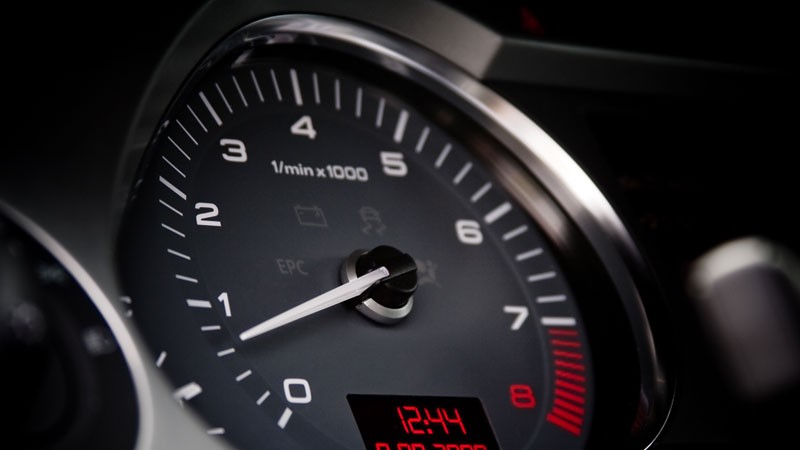 Higher or Lower Idling
Higher or Lower Idling
5. What is the Process for Cleaning a Throttle Body?
Cleaning a throttle body involves using a specialized cleaner and a soft brush to remove buildup; a study by the California Air Resources Board (CARB) found that regular throttle body cleaning can reduce emissions and improve fuel economy in older vehicles. Proper cleaning can restore performance and prevent future issues.
The process for cleaning a throttle body is straightforward but requires careful attention to detail to ensure effective removal of dirt and carbon buildup. Here’s a step-by-step guide:
- Gather Necessary Materials:
- Throttle Body Cleaner: Purchase a high-quality throttle body cleaner specifically designed for automotive use.
- Soft Brush: Use a soft-bristled brush or toothbrush to scrub away dirt and carbon deposits.
- Clean Rags: Have clean, lint-free rags on hand to wipe away cleaner and residue.
- Screwdrivers and Wrenches: Depending on the vehicle, you may need screwdrivers or wrenches to remove the air intake duct.
- Gloves and Eye Protection: Wear gloves and eye protection to avoid skin irritation and protect your eyes from cleaner spray.
- Prepare the Vehicle:
- Park Safely: Park the vehicle in a well-ventilated area and turn off the engine.
- Disconnect the Battery: Disconnect the negative terminal of the battery to prevent any electrical issues during the cleaning process.
- Access the Throttle Body:
- Locate the Throttle Body: The throttle body is typically located between the air filter box and the intake manifold.
- Remove Air Intake Duct: Use screwdrivers or wrenches to loosen and remove the air intake duct connected to the throttle body. This will provide you with clear access to the throttle body.
- Inspect the Throttle Body:
- Visual Inspection: Before cleaning, visually inspect the throttle body for dirt, grime, and carbon deposits. Pay close attention to the throttle plate and the surrounding areas.
- Apply Throttle Body Cleaner:
- Spray the Cleaner: Spray the throttle body cleaner liberally inside the throttle body, focusing on areas with heavy buildup.
- Open the Throttle Plate: Manually open the throttle plate to access and clean the back side of the plate and the inner walls of the throttle body.
- Scrub Away Deposits:
- Use the Soft Brush: Use the soft brush to gently scrub away dirt and carbon deposits from the throttle plate and the inner walls of the throttle body. Be careful not to damage any sensitive components.
- Repeat as Necessary: Repeat the spraying and scrubbing process as necessary until all dirt and carbon deposits are removed.
- Wipe Clean:
- Use Clean Rags: Use clean rags to wipe away any remaining cleaner and residue from the throttle body.
- Ensure Dryness: Ensure that the throttle body is completely dry before reassembling the air intake duct.
- Reassemble and Reconnect:
- Reattach Air Intake Duct: Reattach the air intake duct to the throttle body, tightening any screws or clamps securely.
- Reconnect Battery: Reconnect the negative terminal of the battery.
- Start the Engine:
- Start the Engine: Start the engine and allow it to idle for a few minutes. The engine may run rough initially as the cleaner burns off.
- Monitor Performance: Monitor the engine’s performance to ensure that it is running smoothly and that any previous symptoms have been resolved.
- Test Drive:
- Test Drive the Vehicle: Take the vehicle for a test drive to ensure that it is accelerating smoothly and performing optimally.
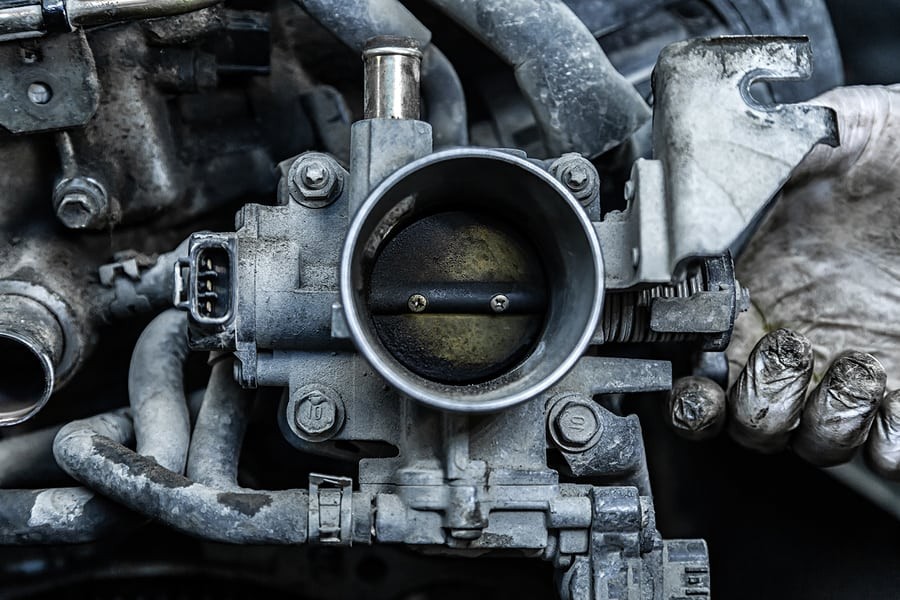 Dirt or Grime Build-up
Dirt or Grime Build-up
6. When Should You Replace a Throttle Body Instead of Cleaning It?
Replace a throttle body if cleaning doesn’t resolve issues, or if there’s significant mechanical or electrical damage; according to a report by AAA, replacing a severely damaged throttle body can prevent more costly engine repairs down the line. Deciding between cleaning and replacement depends on the severity of the damage.
Determining whether to replace a throttle body instead of cleaning it depends on the extent of the damage and the nature of the issues present. While cleaning can resolve many common problems, certain conditions warrant a full replacement. Here’s a guide to help you decide:
- Persistent Issues After Cleaning:
- Description: If the throttle body continues to exhibit symptoms such as rough idling, poor acceleration, or stalling even after a thorough cleaning, replacement may be necessary.
- Explanation: In some cases, the buildup of dirt and carbon deposits can cause irreversible damage to the throttle body’s internal components. Cleaning may remove the surface contaminants but fail to address underlying issues.
- Mechanical Damage:
- Description: Physical damage to the throttle body, such as cracks, breaks, or stripped threads, necessitates replacement.
- Explanation: Mechanical damage can compromise the throttle body’s ability to function correctly. Cracks or breaks can cause vacuum leaks, while stripped threads can prevent proper installation and sealing.
- Electrical Malfunctions:
- Description: If the throttle position sensor (TPS) or electronic throttle control (ETC) motor is faulty and cannot be repaired, replacing the entire throttle body may be the most cost-effective solution.
- Explanation: Electrical components within the throttle body can fail due to wear, corrosion, or internal damage. If these components are not functioning correctly, the throttle body will not be able to regulate airflow effectively.
- Excessive Wear:
- Description: Over time, the internal components of the throttle body can wear down due to constant use.
- Explanation: Excessive wear can cause the throttle plate to stick or bind, leading to erratic airflow and reduced engine performance. If the wear is significant, cleaning may not be sufficient to restore proper function.
- Corrosion:
- Description: Corrosion can damage the throttle body’s internal components, leading to performance issues.
- Explanation: Corrosion can compromise the throttle body’s ability to function correctly, leading to performance issues.
- Vacuum Leaks:
- Description: If there are persistent vacuum leaks around the throttle body that cannot be resolved by replacing gaskets or seals, the throttle body itself may be damaged and require replacement.
- Explanation: Vacuum leaks can disrupt the air-fuel mixture, leading to rough idling, stalling, and reduced power. If the throttle body is warped or damaged, it may not be possible to create a proper seal, necessitating replacement.
- Cost Comparison:
- Description: Consider the cost of cleaning versus replacement.
- Explanation: In some cases, the cost of cleaning may exceed the cost of a new throttle body.
7. What are the Potential Consequences of Ignoring a Faulty Throttle Body?
Ignoring a faulty throttle body can lead to decreased fuel efficiency, engine damage, and potential safety issues; research from the Oak Ridge National Laboratory indicates that addressing engine issues promptly can prevent long-term damage and maintain vehicle performance. Timely repairs are crucial for vehicle longevity.
Ignoring a faulty throttle body can lead to a range of adverse consequences, affecting the vehicle’s performance, fuel efficiency, and overall reliability. Addressing throttle body issues promptly is essential to prevent more significant problems. Here’s a detailed look at the potential consequences of neglecting a faulty throttle body:
- Decreased Fuel Efficiency:
- Description: A malfunctioning throttle body can disrupt the air-fuel mixture, leading to inefficient combustion and reduced fuel economy.
- Explanation: When the throttle body is not functioning correctly, it may not regulate the airflow properly, causing the engine to consume more fuel to maintain performance. This can result in a noticeable decrease in miles per gallon (MPG) and increased fuel costs.
- Reduced Engine Performance:
- Description: A faulty throttle body can cause a decrease in engine power and acceleration.
- Explanation: Improper airflow can prevent the engine from generating the necessary power for smooth acceleration and overall performance. This can make the vehicle feel sluggish and unresponsive, especially when trying to accelerate or climb hills.
- Rough Idling and Stalling:
- Description: A malfunctioning throttle body can cause the engine to idle roughly or stall frequently, especially at low speeds or when stationary.
- Explanation: Dirt, carbon deposits, or mechanical issues can disrupt the airflow, leading to unstable idle speeds. The engine may struggle to maintain a consistent RPM, resulting in rough idling or stalling.
- Check Engine Light Illumination:
- Description: A faulty throttle body can trigger the check engine light on the dashboard.
- Explanation: The vehicle’s computer monitors the performance of the throttle body and its related sensors. If it detects a problem, it illuminates the check engine light, signaling the need for diagnostic and repair.
- Increased Emissions:
- Description: A malfunctioning throttle body can lead to increased emissions of harmful pollutants.
- Explanation: Inefficient combustion can result in higher levels of hydrocarbons, carbon monoxide, and nitrogen oxides being released into the atmosphere. This can contribute to air pollution and may cause the vehicle to fail emissions tests.
- Potential Engine Damage:
- Description: In severe cases, ignoring a faulty throttle body can lead to engine damage.
- Explanation: If the engine is constantly running with an improper air-fuel mixture, it can cause excessive wear and tear on internal components. This can lead to more significant and costly repairs in the long run.
- Safety Issues:
- Description: A faulty throttle body can create safety issues, especially if the engine stalls unexpectedly or lacks power when needed.
- Explanation: If the engine stalls while driving, it can cause a loss of power steering and braking, making it difficult to control the vehicle. Similarly, a lack of power when trying to accelerate can create dangerous situations, especially when merging onto highways or navigating traffic.
- Catalytic Converter Damage:
- Description: A faulty throttle body can cause damage to the catalytic converter.
- Explanation: Inefficient combustion can result in unburned fuel entering the exhaust system, which can overheat and damage the catalytic converter. Replacing a catalytic converter can be expensive, so it’s essential to address throttle body issues promptly to prevent this.
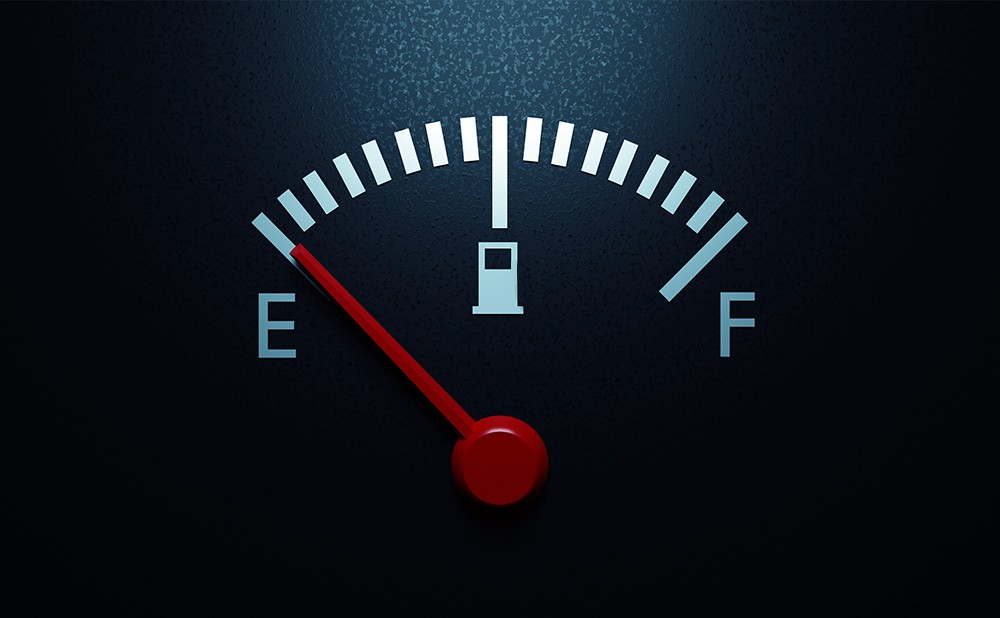 Poor Mileage
Poor Mileage
8. Can a Faulty Throttle Body Affect Other Car Components?
Yes, a faulty throttle body can affect the engine, transmission, and emissions system; a study by the Environmental Protection Agency (EPA) highlights the interconnectedness of vehicle systems, noting that a malfunctioning component can have cascading effects. Addressing throttle body issues can prevent further damage to other systems.
Yes, a faulty throttle body can indeed affect other car components due to its role in regulating the air-fuel mixture and overall engine performance. Here’s a detailed look at how a malfunctioning throttle body can impact various systems:
- Engine:
- Impact: The most direct impact of a faulty throttle body is on the engine itself.
- Explanation:
- Improper Air-Fuel Mixture: The throttle body controls the amount of air entering the engine, which is crucial for maintaining the correct air-fuel mixture. A malfunctioning throttle body can disrupt this balance, leading to either a rich (too much fuel) or lean (too little fuel) mixture.
- Reduced Performance: An improper air-fuel mixture can result in reduced engine power, poor acceleration, and rough idling. The engine may struggle to operate efficiently, leading to decreased performance.
- Increased Wear: Running the engine with an incorrect air-fuel mixture can cause increased wear and tear on internal components, such as pistons, cylinders, and valves.
- Transmission:
- Impact: A faulty throttle body can indirectly affect the transmission.
- Explanation:
- Rough Shifting: The engine control unit (ECU) uses data from various sensors, including the throttle position sensor (TPS), to determine when and how to shift gears. A malfunctioning TPS can send incorrect signals to the ECU, leading to rough or erratic shifting.
- Delayed Shifting: The transmission may delay shifting gears or shift at the wrong RPMs, affecting the vehicle’s overall performance and fuel efficiency.
- Increased Stress: Rough or delayed shifting can put additional stress on the transmission components, potentially leading to premature wear and failure.
- Emissions System:
- Impact: A faulty throttle body can significantly impact the emissions system.
- Explanation:
- Increased Emissions: Inefficient combustion due to an improper air-fuel mixture can result in higher levels of harmful pollutants being released into the atmosphere. This can include hydrocarbons (HC), carbon monoxide (CO), and nitrogen oxides (NOx).
- Catalytic Converter Damage: Unburned fuel entering the exhaust system can overheat and damage the catalytic converter. The catalytic converter is designed to reduce harmful emissions, but it can be compromised by a rich air-fuel mixture.
- O2 Sensor Issues: The oxygen (O2) sensors monitor the amount of oxygen in the exhaust gases to help the ECU adjust the air-fuel mixture. A faulty throttle body can cause the O2 sensors to provide inaccurate readings, further disrupting the emissions system.
- Fuel System:
- Impact: A faulty throttle body can affect the fuel system.
- Explanation:
- Fuel Injector Problems: The ECU adjusts the fuel injection based on the data it receives from the TPS and other sensors. A malfunctioning throttle body can cause the ECU to miscalculate the amount of fuel needed, leading to over- or under-fueling.
- Fuel Pump Stress: The fuel pump may have to work harder to compensate for the improper air-fuel mixture, potentially leading to premature wear and failure.
- Electrical System:
- Impact: Electrical issues related to the throttle body can affect other systems.
- Explanation:
- Sensor Malfunctions: A faulty TPS or other sensors can send incorrect signals to the ECU, affecting various systems that rely on accurate data.
- Check Engine Light: The check engine light can illuminate due to issues with the throttle body, indicating that there is a problem that needs to be addressed.
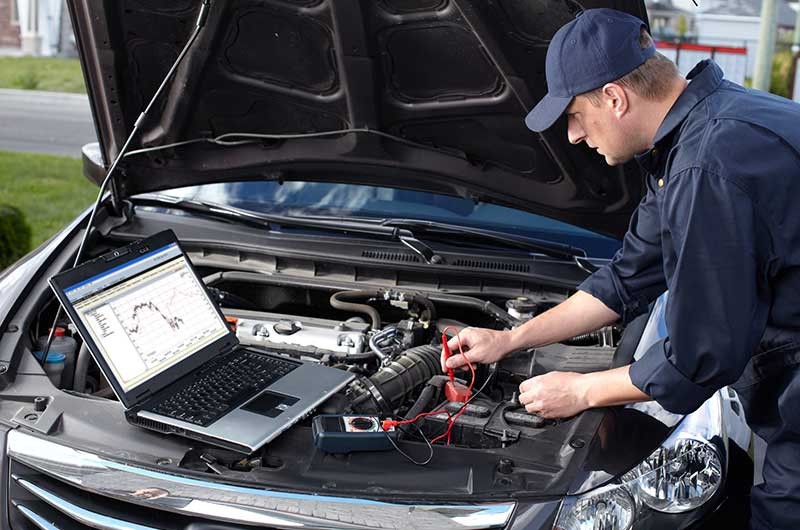 Electrical Problems
Electrical Problems
9. What are Common Trouble Codes Associated with a Faulty Throttle Body?
Common trouble codes include P0121, P0122, and P0123, indicating issues with the throttle position sensor; a technical bulletin from Bosch highlights that these codes often result from sensor contamination or electrical faults. Identifying these codes can help mechanics quickly diagnose the problem.
Common trouble codes associated with a faulty throttle body can help mechanics quickly diagnose the problem. Here’s a detailed breakdown of these codes and their implications:
- P0121 – Throttle/Pedal Position Sensor A Circuit Range/Performance:
- Description: This code indicates that the engine control unit (ECU) has detected a problem with the throttle position sensor (TPS) A circuit. Specifically, the signal from the TPS is not within the expected range for a given throttle position.
- Symptoms:
- Check engine light is illuminated.
- Rough idling or stalling.
- Poor acceleration or hesitation.
- Erratic engine performance.
- Causes:
- Faulty throttle position sensor (TPS).
- Dirty or contaminated TPS.
- Loose or corroded electrical connections.
- Damaged wiring.
- Vacuum leaks near the throttle body.
- ECU malfunction (rare).
- P0122 – Throttle/Pedal Position Sensor A Circuit Low Input:
- Description: This code indicates that the ECU has detected a low voltage signal from the TPS A circuit. The signal is lower than the expected minimum value.
- Symptoms:
- Check engine light is illuminated.
- Engine may not start.
- Poor acceleration or hesitation.
- Engine stalling.
- Causes:
- Faulty throttle position sensor (TPS).
- Short to ground in the TPS circuit.
- Loose or corroded electrical connections.
- Damaged wiring.
- ECU malfunction (rare).
- P0123 – Throttle/Pedal Position Sensor A Circuit High Input:
- Description: This code indicates that the ECU has detected a high voltage signal from the TPS A circuit. The signal is higher than the expected maximum value.
- Symptoms:
- Check engine light is illuminated.
- High idle speed.
- Engine may rev uncontrollably.
- Poor fuel economy.
- Causes:
- Faulty throttle position sensor (TPS).
- Short to voltage in the TPS circuit.
- Loose or corroded electrical connections.
- Damaged wiring.
- ECU malfunction (rare).
- P0120 – Throttle/Pedal Position Sensor/Switch A Circuit Malfunction:
- Description: This code indicates a general malfunction in the TPS A circuit.
- Symptoms:
- Check engine light is illuminated.
- Rough idling or stalling.
- Poor acceleration or hesitation.
- Erratic engine performance.
- Causes:
- Faulty throttle position sensor (TPS).
- Loose or corroded electrical connections.
- Damaged wiring.
- Vacuum leaks near the throttle body.
- ECU malfunction (rare).
- P0505 – Idle Air Control System Malfunction:
- Description: This code indicates a problem with the idle air control (IAC) system, which is often integrated with the throttle body.
- Symptoms:
- Check engine light is illuminated.
- Rough idling or stalling.
- High or low idle speed.
- Causes:
- Faulty idle air control (IAC) valve.
- Dirty or contaminated IAC valve.
- Loose or corroded electrical connections.
- Damaged wiring.
- Vacuum leaks near the throttle body.
- ECU malfunction (rare).
- P2100 – Throttle Actuator Control Motor Circuit Open:
- Description: This code indicates an open circuit in the throttle actuator control motor circuit, which controls the throttle plate’s movement in electronic throttle control (ETC) systems.
- Symptoms:
- Check engine light is illuminated.
- Reduced engine power.
- Engine may not respond to throttle input.
- Causes:
- Faulty throttle actuator control motor.
- Open circuit in the control motor wiring.
- Loose or corroded electrical connections.
- ECU malfunction (rare).
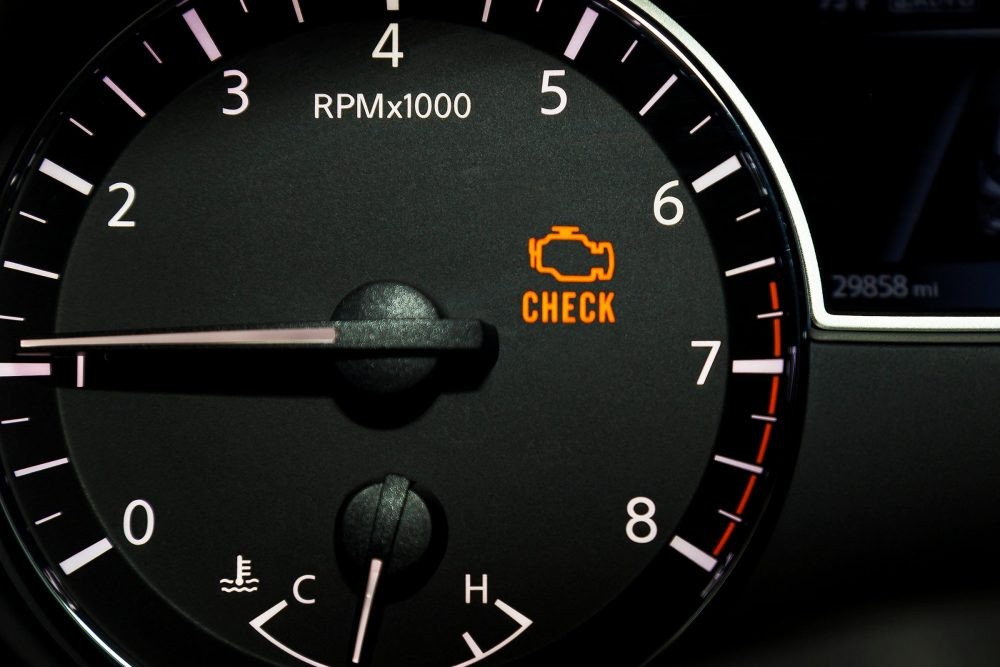 Check Engine Light
Check Engine Light
10. What Are the Steps to Replace a Faulty Throttle Body?
Replacing a faulty throttle body involves disconnecting the battery, removing the old unit, and installing a new one; a repair manual from Chilton emphasizes the importance of calibrating the new throttle body to the vehicle’s computer. Proper installation and calibration are essential for optimal performance.
Replacing a faulty throttle body involves several steps to ensure proper installation and optimal engine performance. Here’s a detailed guide:
- Gather Necessary Tools and Materials:
- New Throttle Body: Purchase a replacement throttle body that is compatible with your vehicle’s make, model, and year.
- Socket Set and Wrenches: You’ll need a socket set and wrenches to remove and install bolts and nuts.
- Screwdrivers: Have both flathead and Phillips head screwdrivers on hand for various tasks.
- Throttle Body Cleaner: Use throttle body cleaner to clean the surrounding area and the new throttle body before installation.
- Clean Rags: Keep clean, lint-free rags handy to wipe away any dirt or cleaner residue.
- Torque Wrench: A torque wrench is essential to tighten bolts to the manufacturer’s specified torque.
- Gloves and Eye Protection: Wear gloves and eye protection to protect your skin and eyes.
- Prepare the Vehicle:
- Park Safely: Park the vehicle on a level surface in a well-ventilated area.
- Disconnect the Battery: Disconnect the negative terminal of the battery to prevent electrical issues.
- Remove the Old Throttle Body:
- Locate the Throttle Body: The throttle body is typically located between the air filter box and the intake manifold.
- Remove Air Intake Duct: Use screwdrivers or wrenches to loosen and remove the air intake duct connected to the throttle body.
- Disconnect Electrical Connectors: Disconnect any electrical connectors attached to the throttle body, such as the throttle position sensor (TPS) and idle air control (IAC) valve connectors.
- Remove Vacuum Lines: Disconnect any vacuum lines connected to the throttle body.
- Remove Mounting Bolts: Use a socket set or wrenches to remove the bolts or nuts that secure the throttle body to the intake manifold.
- Remove the Throttle Body: Carefully remove the old throttle body from the intake manifold.
- Clean the Mounting Surface:
- Clean the Intake Manifold: Use a clean rag and throttle body cleaner to clean the mounting surface on the intake manifold. Remove any old gasket material or debris.
- Install the New Throttle Body:
- Install New Gasket: Place a new gasket between the throttle body and the intake manifold.
- Position the Throttle Body: Carefully position the new throttle body onto the intake manifold, aligning the bolt holes.
- Install Mounting Bolts: Install the mounting bolts or